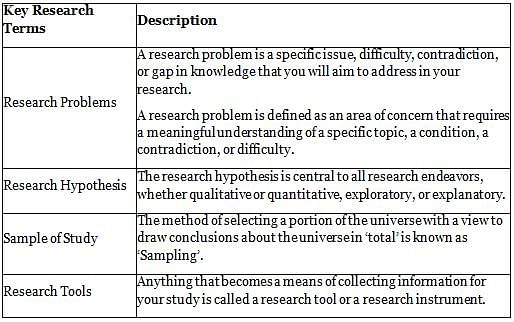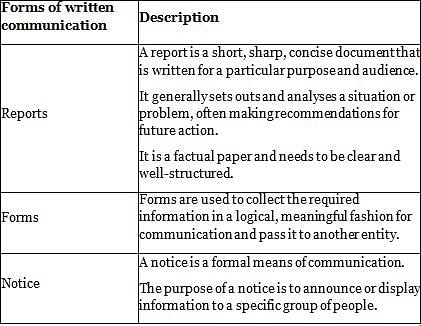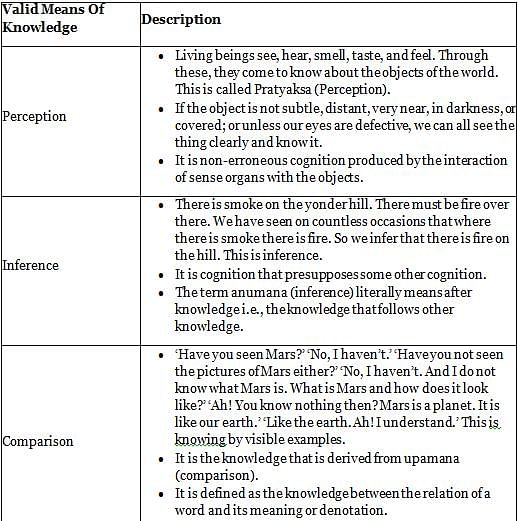UGC NET Paper 1 Practice Test - 6 - UGC NET MCQ
30 Questions MCQ Test - UGC NET Paper 1 Practice Test - 6
Which of the following is/are classified in the category of the developmental research?
______ is committing to the factual information to memory.
| 1 Crore+ students have signed up on EduRev. Have you? Download the App |
Which one of the following is a good psychological factor for effective learning to take place?
Good evaluation of written material should not be based on
Given below are two statements:
Statement I : One of the basic principles of progressive view of teaching is that education should be life itself rather than a preparation for living.
Statement II : According to reconstructionist view of education the new social order must be 'genuinely democratic'.
In the light of the above statements, Choose the correct answer from the options given below:
Which of the following is an example of a circular argument?
Match List I with List II

Choose the Correct answer from the option given below:
Directions: Read the following passage carefully and answer the question.
It should be remembered that the nationalist movement in India, like all nationalist movements, was essentially a bourgeois movement. It represented the natural historical stage of development, and to consider it or to criticise it as a working-class movement is wrong. Gandhi represented that movement and the Indian masses in relation to that movement to a supreme degree, and he became the voice of Indian people to that extent. The main contribution of Gandhi to India and the Indian masses has been through the powerful movements which he launched through the National Congress. Through nation-wide action he sought to mould the millions, and largely succeeded in doing so, and changing them from a demoralised, timid and hopeless mass, bullied and crushed by every dominant interest, and incapable of resistance, into a people with self-respect and self-reliance, resisting tyranny, and capable of united action and sacrifice for a larger cause.
Gandhi made people think of political and economic issues and every village and every bazaar hummed with argument and debate on the new ideas and hopes that filled the people. That was an amazing psychological change. The time was ripe for it, of course, and circumstances and world conditions worked for this change. But a great leader is necessary to take advantage of circumstances and conditions. Gandhi was that leader, and he released many of the bonds that imprisoned and disabled our minds, and none of us who experienced it can ever forget that great feeling of release and exhilaration that came over the Indian people.
Gandhi has played a revolutionary role in India of the greatest importance because he knew how to make the most of the objective conditions and could reach the heart of the masses, while groups with a more advanced ideology functioned largely in the air because they did not fit in with those conditions and could therefore not evoke any substantial response from the masses.
It is perfectly true that Gandhi, functioning in the nationalist plane, does not think in terms of the conflict of classes, and tries to compose their differences. But the action he has indulged and taught the people has inevitably raised mass consciousness tremendously and made social issues vital. Gandhi and the Congress must be judged by the policies they pursue and the action they indulge in. But behind this, personality counts and colours those policies and activities. In the case of very exceptional person like Gandhi, the question of personality becomes especially important in order to understand and appraise him. To us he has represented the spirit and honour of India, the yearning of her sorrowing millions to be rid of their innumerable burdens, and an insult to him by the British Government or others has been an insult to India and her people.
Q. The change that the Gandhian movement brought among the Indian masses was
Directions: Read the following passage carefully and answer the question.
It should be remembered that the nationalist movement in India, like all nationalist movements, was essentially a bourgeois movement. It represented the natural historical stage of development, and to consider it or to criticise it as a working-class movement is wrong. Gandhi represented that movement and the Indian masses in relation to that movement to a supreme degree, and he became the voice of Indian people to that extent. The main contribution of Gandhi to India and the Indian masses has been through the powerful movements which he launched through the National Congress. Through nation-wide action he sought to mould the millions, and largely succeeded in doing so, and changing them from a demoralised, timid and hopeless mass, bullied and crushed by every dominant interest, and incapable of resistance, into a people with self-respect and self-reliance, resisting tyranny, and capable of united action and sacrifice for a larger cause.
Gandhi made people think of political and economic issues and every village and every bazaar hummed with argument and debate on the new ideas and hopes that filled the people. That was an amazing psychological change. The time was ripe for it, of course, and circumstances and world conditions worked for this change. But a great leader is necessary to take advantage of circumstances and conditions. Gandhi was that leader, and he released many of the bonds that imprisoned and disabled our minds, and none of us who experienced it can ever forget that great feeling of release and exhilaration that came over the Indian people.
Gandhi has played a revolutionary role in India of the greatest importance because he knew how to make the most of the objective conditions and could reach the heart of the masses, while groups with a more advanced ideology functioned largely in the air because they did not fit in with those conditions and could therefore not evoke any substantial response from the masses.
It is perfectly true that Gandhi, functioning in the nationalist plane, does not think in terms of the conflict of classes, and tries to compose their differences. But the action he has indulged and taught the people has inevitably raised mass consciousness tremendously and made social issues vital. Gandhi and the Congress must be judged by the policies they pursue and the action they indulge in. But behind this, personality counts and colours those policies and activities. In the case of very exceptional person like Gandhi, the question of personality becomes especially important in order to understand and appraise him. To us he has represented the spirit and honour of India, the yearning of her sorrowing millions to be rid of their innumerable burdens, and an insult to him by the British Government or others has been an insult to India and her people.
Q. Gandhi played a revolutionary role in India because he could
Direction: Read the passage carefully and answer the following question.
If the world is different today, we need to think, talk and engage accordingly. Falling back is unlikely to help, he said adding “purposeful pursuit of national interest is shifting global dynamics”. Highlighting India’s new approach in dealing with terrorism he compared “lack of response to the terror attack in Mumbai in comparison to the way the country responded to the Uri and Pulwama strikes. On India walking away from the Regional Comprehensive Economic Partnership, the external affair minister said no agreement was better than having a bad agreement.
Giving a historical perspective to geopolitical issues, Jai-Shankar said “For years India’s position on the world state seemed assured but the 1962 conflict with China significantly damaged India’s standing.
Q. Year's back conflict of India with China was:
Direction: Read the passage carefully and answer the following question.
If the world is different today, we need to think, talk and engage accordingly. Falling back is unlikely to help, he said adding “purposeful pursuit of national interest is shifting global dynamics”. Highlighting India’s new approach in dealing with terrorism he compared “lack of response to the terror attack in Mumbai in comparison to the way the country responded to the Uri and Pulwama strikes. On India walking away from the Regional Comprehensive Economic Partnership, the external affair minister said no agreement was better than having a bad agreement.
Giving a historical perspective to geopolitical issues, Jai-Shankar said “For years India’s position on the world state seemed assured but the 1962 conflict with China significantly damaged India’s standing.
Q.“For years India’s position on the world state seemed assured but the 1962 conflict with China significantly damaged India’s standing."
The above statement was given by:
Direction: Read the passage carefully and answer the following question.
If the world is different today, we need to think, talk and engage accordingly. Falling back is unlikely to help, he said adding “purposeful pursuit of national interest is shifting global dynamics”. Highlighting India’s new approach in dealing with terrorism he compared “lack of response to the terror attack in Mumbai in comparison to the way the country responded to the Uri and Pulwama strikes. On India walking away from the Regional Comprehensive Economic Partnership, the external affair minister said no agreement was better than having a bad agreement.
Giving a historical perspective to geopolitical issues, Jai-Shankar said “For years India’s position on the world state seemed assured but the 1962 conflict with China significantly damaged India’s standing.
Q. RCEP stands for:
Directions: In the following question, two statements are given. One is Assertion and the other is Reason. Examine the statements carefully and mark the correct answer accordingly.
Assertion (A): Mass media promotes a culture of violence in the society.
Reason (R): Because violence sells in the market as people themselves are violent in character.
Which of the following are the forms of written communication.
- Reports
- Forms
- Notice
- Voice message
Choose the correct answer from the codes given below.
Match List I with List II:
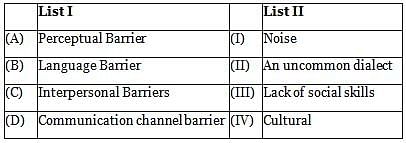
Choose the correct answer from the options given below:
A trader marks his goods 40% above the cost price and gives the discount of 20% on it. What is the profit percentage?
In a certain code, CLOCK is written as KCOLC. How would STEPS be written in that code?
Given below are two statements:
Statement I: 300-meter long train crosses a platform of the same length in 30 seconds. Speed of train 10m/sec.
Statement II: The average speed is the mean of speed.
In light of the above statements, choose the correct option given below.
Which one of the following belongs to the category of homogeneous data?
The product of 2 number is 1280 and their HCF is square of the smallest composite number. What is the LCM of these numbers?
Inference (anumana) in Indian Logic is rooted in:
The sequential order of syllogism on Nyaya philosophy is
A. Nigmam
B. Udaharana
C. Hetu
D. Upanaya
E. Pratigya
Choose the correct answer from the options given below:
Directions: In the following question, the two terms given to the left of (: :) bear a certain relationship to each other. The same relationship exists between the two terms to its right, out of which one is missing. Find the missing term from the given alternatives.
MAN : PDQ : : WAN : ?
List I mentions the four valid means of knowledge as given by gotama while List II gives their description. Match List-I with List-II:
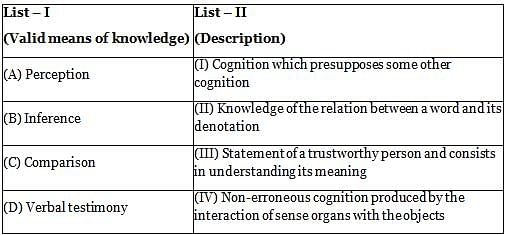
Choose the correct answer from the options given below:
Simplify the following expression:
0.082 + (7/10)2


